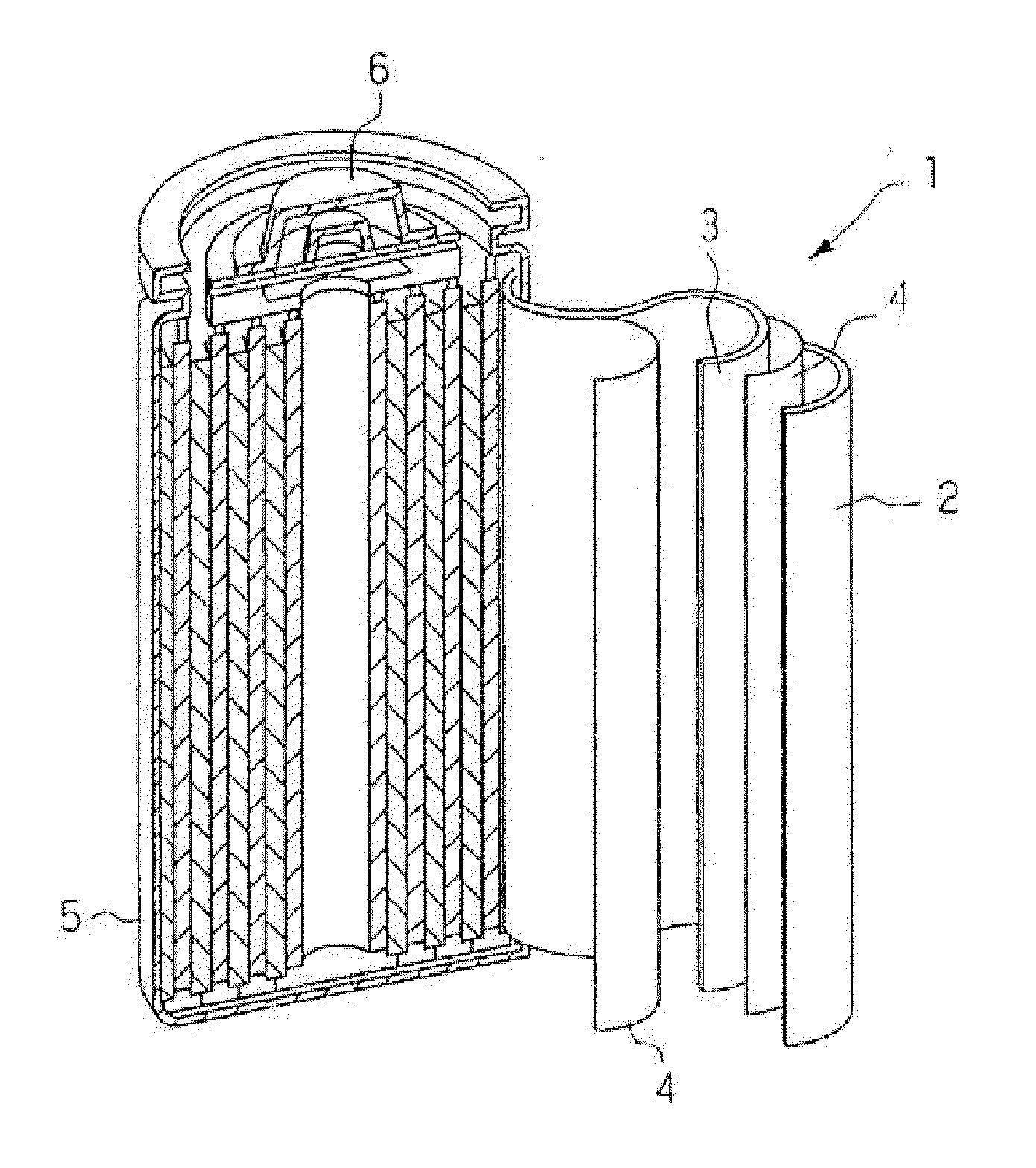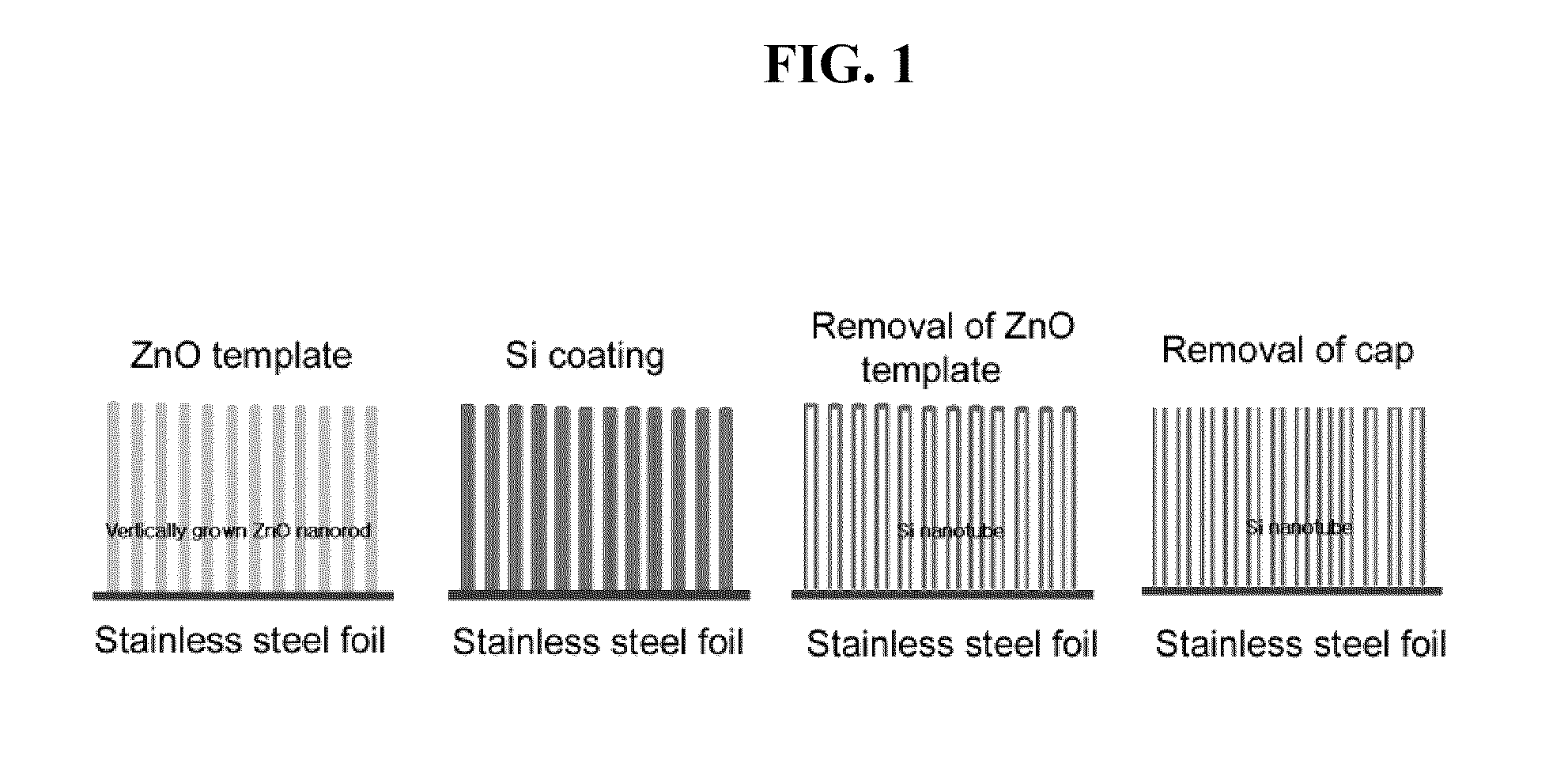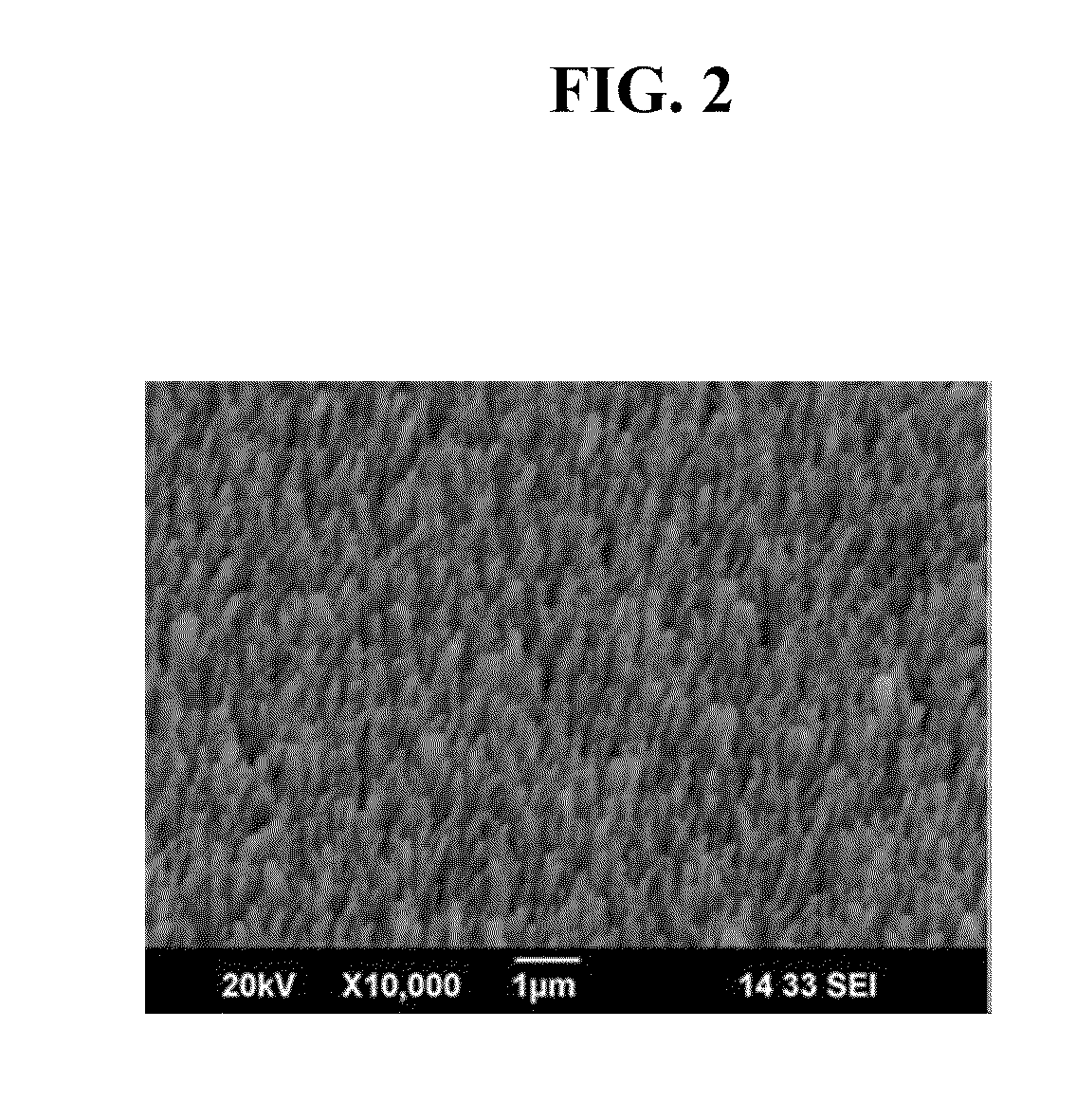Negative electrode including metal/metalloid nanotubes, lithium battery including the negative electrode, and method of manufacturing the negative electrode
a technology of metal/metalloid nanotubes and negative electrodes, which is applied in the direction of cell components, conductors, electrochemical generators, etc., can solve the problems of high volume expansion rate of si-nanowires, cracking of negative electrodes during charging/discharging, and severe electrolyte decomposition reaction
- Summary
- Abstract
- Description
- Claims
- Application Information
AI Technical Summary
Problems solved by technology
Method used
Image
Examples
example 1
[0095]ZnO-nanorods were grown on a stainless steel substrate (Nialco, U.S.A.) having a thickness of 10 μm, such that the ZnO-nanorods extended perpendicular to a corresponding surface of the substrate. In particular, a ZnO thin film having a thickness of 500 nm was formed on the stainless steel substrate by using a metal organic chemical vapor deposition (MOCVD) apparatus, immersed in an aqueous solution of 0.025M zinc nitrate and 0.025M metheneamine, and then left at 90° C. for 24 hours, to vertically grow ZnO nanorods on the substrate. These processes of growing the ZnO nanorods were repeated 5 times in the same aqueous solution, until the ZnO nanorods grew to a target length.
[0096]A layer of the ZnO nanorods had a thickness of 6 μm. The ZnO nanorods had a diameter of 100 nm.
[0097]H2 gas and SiH4 gas (diluted to 10% by volume in H2 gas) were flowed onto the stainless steel substrate on which the ZnO nanorods were formed, in a chamber (manufactured in-house) at 545° C., in a hydrog...
example 2
[0105]A negative electrode was manufactured in the same manner as in Example 1, except that a wet-etching operation, which will be described below, was further performed using a Buffered Oxide etchant (BOE) after the dry-etching operation. The size of the obtained silicon nanotubes remained unchanged.
[0106](Wet-Etching Operation)
[0107]The negative electrode with the silicon nanotubes having opened ends was immersed in a BOE (HF:NH4F(4:1 mole ratio)) solution, cleansed with ethanol, and dried, and thus the wet-etching operation was completely performed.
example 3
[0108]A negative electrode was manufactured in the same manner as in Example 1, except that a wet-etching operation, which will be described below, using a BOE and a hydrogen treatment operation (a thermal treatment operation in a reducible atmosphere) were further performed after the dry-etching operation.
[0109](Wet-Etching Operation)
[0110]The negative electrode with the silicon nanotubes having opened ends was immersed in a BOE (HF:NH4F(4:1 mole ratio)) solution, cleansed with ethanol, and dried, and thus the wet-etching operation was completely performed.
[0111](Hydrogen Treatment Operation)
[0112]The negative electrode with the silicon nanotubes on which the wet-etching operation had been completely performed was input into a chamber, hydrogen of 300 sccm and Ar (Argon) of 300 sccm were flowed onto the negative electrode with the silicon nanotubes at 600° C. for 12 hours, and thus the hydrogen treatment operation was completely performed.
PUM
 Login to View More
Login to View More Abstract
Description
Claims
Application Information
 Login to View More
Login to View More - R&D
- Intellectual Property
- Life Sciences
- Materials
- Tech Scout
- Unparalleled Data Quality
- Higher Quality Content
- 60% Fewer Hallucinations
Browse by: Latest US Patents, China's latest patents, Technical Efficacy Thesaurus, Application Domain, Technology Topic, Popular Technical Reports.
© 2025 PatSnap. All rights reserved.Legal|Privacy policy|Modern Slavery Act Transparency Statement|Sitemap|About US| Contact US: help@patsnap.com



